-
 Bitcoin
Bitcoin $99,594.2189
-3.59% -
 Ethereum
Ethereum $2,188.5793
-9.00% -
 Tether USDt
Tether USDt $1.0001
-0.02% -
 XRP
XRP $1.9745
-5.82% -
 BNB
BNB $608.9511
-3.73% -
 Solana
Solana $130.4575
-5.93% -
 USDC
USDC $1.0000
0.01% -
 TRON
TRON $0.2637
-3.59% -
 Dogecoin
Dogecoin $0.1493
-5.97% -
 Cardano
Cardano $0.5322
-6.72% -
 Hyperliquid
Hyperliquid $33.9044
3.33% -
 Bitcoin Cash
Bitcoin Cash $449.6411
-5.46% -
 UNUS SED LEO
UNUS SED LEO $8.9629
0.43% -
 Sui
Sui $2.3943
-8.35% -
 Chainlink
Chainlink $11.4402
-7.83% -
 Stellar
Stellar $0.2241
-6.49% -
 Avalanche
Avalanche $16.1489
-4.24% -
 Toncoin
Toncoin $2.7182
-5.94% -
 Shiba Inu
Shiba Inu $0.0...01040
-5.72% -
 Litecoin
Litecoin $78.7882
-4.07% -
 Ethena USDe
Ethena USDe $1.0004
-0.01% -
 Hedera
Hedera $0.1305
-7.45% -
 Monero
Monero $297.0030
-5.32% -
 Dai
Dai $0.9997
-0.02% -
 Polkadot
Polkadot $3.1834
-6.03% -
 Bitget Token
Bitget Token $3.9788
-7.03% -
 Uniswap
Uniswap $6.1327
-10.62% -
 Pepe
Pepe $0.0...08689
-8.30% -
 Pi
Pi $0.4826
-9.65% -
 Aave
Aave $219.8043
-9.69%
Is the MFI top divergence signal reliable? How long will it take for the stock price to fall after the top divergence?
MFI top divergence signals potential price reversal in crypto; reliability varies, confirmed by other indicators, no fixed timeframe for price decline.
May 24, 2025 at 10:02 am
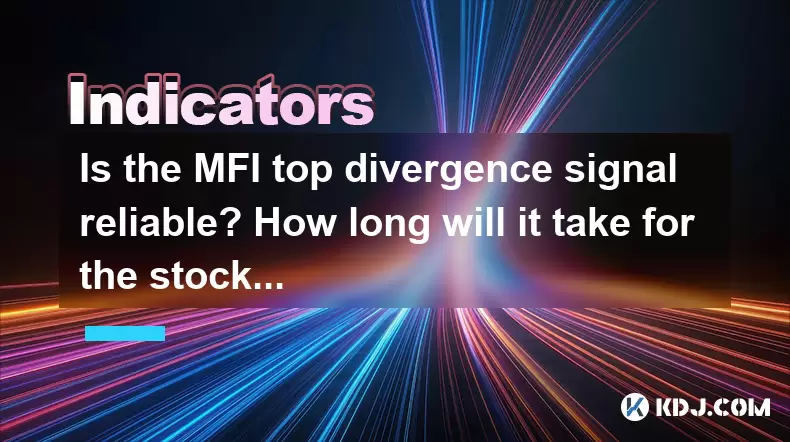
The Money Flow Index (MFI) is a momentum indicator that measures the inflow and outflow of money into a security over a specific period. One of the signals traders often look for is the MFI top divergence, which can indicate a potential reversal in the price of a cryptocurrency. The reliability of this signal and the time it takes for the price to fall after a top divergence are crucial considerations for traders.
Understanding the MFI and Top Divergence
The MFI is calculated by taking into account both price and volume, providing a more comprehensive view of market dynamics than price alone. The formula for the MFI involves the typical price, which is the average of the high, low, and closing prices, multiplied by the volume. The resulting Money Flow is then used to calculate the MFI, which oscillates between 0 and 100.
Top divergence occurs when the price of a cryptocurrency makes a higher high, but the MFI fails to make a corresponding higher high. This discrepancy suggests that the bullish momentum is weakening, potentially signaling an upcoming price reversal. Traders often view this as a bearish signal, indicating that the price may soon decline.
Reliability of the MFI Top Divergence Signal
The reliability of the MFI top divergence signal can vary based on several factors, including market conditions, the timeframe used, and the specific cryptocurrency being analyzed. Generally, the MFI top divergence is considered a reliable signal when it is confirmed by other technical indicators or fundamental analysis.
For instance, if the MFI top divergence is accompanied by bearish candlestick patterns, such as a shooting star or bearish engulfing pattern, the signal's reliability increases. Additionally, if there are negative news or events affecting the cryptocurrency, the likelihood of a price drop following the divergence becomes higher.
Timeframe for Price Decline After MFI Top Divergence
The time it takes for the price to fall after an MFI top divergence can vary widely. There is no fixed timeframe for how long it will take for the price to decline after a top divergence signal is observed. The speed of the price drop depends on various factors, including market liquidity, the overall market sentiment, and the presence of other technical or fundamental signals.
In some cases, the price may start to decline immediately after the top divergence is confirmed, especially if there are strong bearish signals from other indicators or significant negative news. In other instances, the price may take several days or even weeks to fully reflect the bearish momentum indicated by the MFI top divergence.
Using MFI Top Divergence in Trading Strategies
Traders often incorporate the MFI top divergence into their trading strategies to enhance their decision-making process. Here are some ways to use this signal effectively:
- Confirmation with Other Indicators: Always look for confirmation from other technical indicators, such as the Relative Strength Index (RSI), Moving Average Convergence Divergence (MACD), or Bollinger Bands, to increase the reliability of the MFI top divergence signal.
- Volume Analysis: Pay attention to volume patterns. A significant increase in volume during the price decline can confirm the bearish signal provided by the MFI top divergence.
- Risk Management: Use stop-loss orders to manage risk. Since the timing of the price drop can be unpredictable, setting a stop-loss can help protect your investment from significant losses.
- Backtesting: Before relying on the MFI top divergence signal in live trading, backtest your strategy on historical data to understand its effectiveness and refine your approach.
Practical Example of MFI Top Divergence
Let's walk through a practical example of how to identify and use the MFI top divergence signal in a trading scenario:
- Step 1: Identify the Price Highs: Look at the price chart of the cryptocurrency you are analyzing and identify the recent price highs.
- Step 2: Calculate the MFI: Use a trading platform or charting software to calculate the MFI over the same period as the price highs.
- Step 3: Compare Price and MFI: Check if the price made a higher high while the MFI failed to make a corresponding higher high, indicating a top divergence.
- Step 4: Confirm with Other Indicators: Look for bearish signals from other indicators, such as the RSI or MACD, to confirm the MFI top divergence.
- Step 5: Monitor Volume: Observe the volume during the price decline to see if it supports the bearish signal.
- Step 6: Execute the Trade: If all signals align, consider entering a short position or selling your holdings, and set a stop-loss order to manage risk.
Limitations and Considerations
While the MFI top divergence can be a powerful tool, it is not infallible. Traders should be aware of its limitations and use it in conjunction with other analysis methods. For instance, false signals can occur in highly volatile markets or during periods of low liquidity. Additionally, the MFI top divergence may not be as effective for all cryptocurrencies, especially those with lower trading volumes or less established market trends.
Frequently Asked Questions
Q1: Can the MFI top divergence be used for all cryptocurrencies?
A1: While the MFI top divergence can be applied to any cryptocurrency, its effectiveness may vary. It tends to be more reliable for cryptocurrencies with higher liquidity and more established market trends. For less liquid cryptocurrencies, the signal may be less reliable due to increased volatility and potential for false signals.
Q2: How can I improve the accuracy of the MFI top divergence signal?
A2: To improve the accuracy of the MFI top divergence signal, use it in conjunction with other technical indicators and consider the overall market context. Confirming the signal with indicators like RSI, MACD, and volume analysis can enhance its reliability. Additionally, backtesting your strategy on historical data can help refine your approach.
Q3: Is it necessary to use a specific timeframe when analyzing the MFI top divergence?
A3: The choice of timeframe can impact the effectiveness of the MFI top divergence signal. Shorter timeframes, such as 15-minute or hourly charts, may provide more frequent signals but could be less reliable due to increased noise. Longer timeframes, like daily or weekly charts, may offer more reliable signals but fewer trading opportunities. Traders should choose a timeframe that aligns with their trading style and risk tolerance.
Q4: Can the MFI top divergence be used for long-term investment decisions?
A4: The MFI top divergence is primarily a short-term trading signal and is less suited for long-term investment decisions. Long-term investors may find it more beneficial to focus on fundamental analysis and broader market trends rather than relying on short-term technical indicators like the MFI top divergence.
Disclaimer:info@kdj.com
The information provided is not trading advice. kdj.com does not assume any responsibility for any investments made based on the information provided in this article. Cryptocurrencies are highly volatile and it is highly recommended that you invest with caution after thorough research!
If you believe that the content used on this website infringes your copyright, please contact us immediately (info@kdj.com) and we will delete it promptly.
- Altcoins Under Pressure: Cardano and XRP Face Critical Tests
- 2025-06-23 12:25:12
- Rare Coin Fever in Wiltshire: Auctions, Errors, and Olympic Gold!
- 2025-06-23 12:25:12
- XRP Price Under Pressure: War Fears and Market Sentiment
- 2025-06-23 12:30:12
- HAI Token Private Key Leak: What Happened and How to Stay Safe
- 2025-06-23 12:45:12
- Texas Goes All In: Bitcoin Reserve Signals Big State Embrace
- 2025-06-23 12:45:12
- Pi Network's Price Plunge: Crash, Scammer Accusations, and What's Next?
- 2025-06-23 13:05:12
Related knowledge
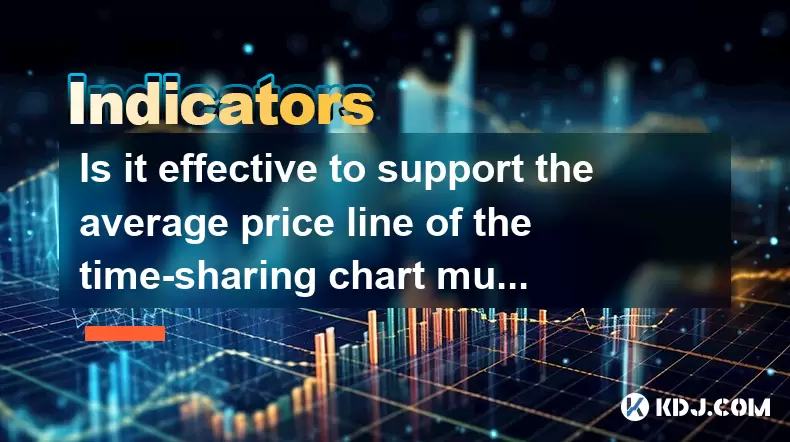
Is it effective to support the average price line of the time-sharing chart multiple times?
Jun 23,2025 at 01:36pm
Understanding the Average Price Line in Time-Sharing ChartsIn cryptocurrency trading, time-sharing charts refer to real-time price charts that display price movements over short intervals, often within a single trading day. Within these charts, the average price line, also known as the Volume Weighted Average Price (VWAP), is a commonly used technical i...
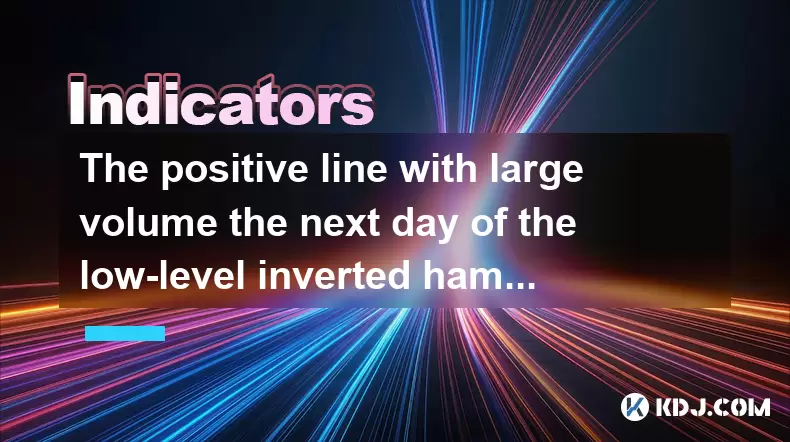
The positive line with large volume the next day of the low-level inverted hammer line confirms the reversal?
Jun 23,2025 at 01:21pm
Understanding the Low-Level Inverted Hammer LineThe inverted hammer line is a single candlestick pattern that typically appears at the end of a downtrend. It has a small real body near the bottom of the trading range and a long upper shadow, indicating that bulls attempted to push prices higher but were met with selling pressure. When this pattern forms...
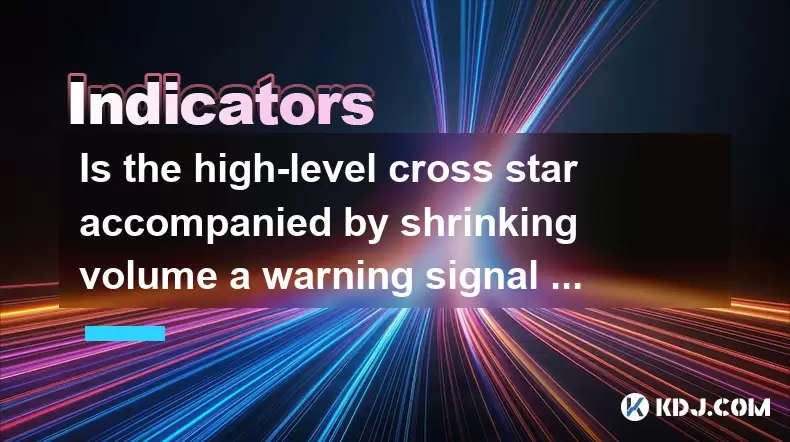
Is the high-level cross star accompanied by shrinking volume a warning signal of peaking?
Jun 23,2025 at 01:28pm
Understanding High-Level Cross Star PatternsIn the world of cryptocurrency trading, candlestick patterns are essential tools for technical analysis. One such pattern is the high-level cross star, which appears as a doji or near-doji candle at a significant resistance level. This pattern often indicates indecision in the market and can be interpreted as ...
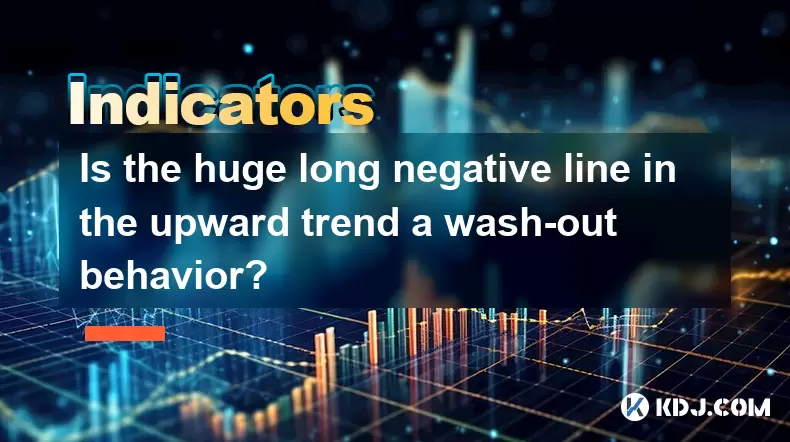
Is the huge long negative line in the upward trend a wash-out behavior?
Jun 23,2025 at 12:49pm
Understanding the Long Negative Candlestick in an Uprising TrendA long negative candlestick, often referred to as a long red or bearish candle, appearing during an upward trend can raise concerns among traders and investors. This pattern typically indicates a sudden and significant drop in price after a period of rising prices. It is often interpreted a...

Can the EXPMA golden cross stand on the 5-day line at the same time?
Jun 23,2025 at 11:42am
Understanding the EXPMA Indicator in Cryptocurrency TradingThe Exponential Moving Average (EXPMA) is a popular technical analysis tool used by cryptocurrency traders to identify trends and potential reversal points. Unlike simple moving averages, the EXPMA gives more weight to recent price data, making it more responsive to current market conditions. In...

Does the second surge in the RSI overbought zone induce more?
Jun 22,2025 at 08:35am
Understanding the RSI Overbought ZoneThe Relative Strength Index (RSI) is a momentum oscillator commonly used in technical analysis to measure the speed and change of price movements. It ranges from 0 to 100, with values above 70 typically considered overbought and values below 30 considered oversold. When the RSI enters the overbought zone for the firs...

Is it effective to support the average price line of the time-sharing chart multiple times?
Jun 23,2025 at 01:36pm
Understanding the Average Price Line in Time-Sharing ChartsIn cryptocurrency trading, time-sharing charts refer to real-time price charts that display price movements over short intervals, often within a single trading day. Within these charts, the average price line, also known as the Volume Weighted Average Price (VWAP), is a commonly used technical i...

The positive line with large volume the next day of the low-level inverted hammer line confirms the reversal?
Jun 23,2025 at 01:21pm
Understanding the Low-Level Inverted Hammer LineThe inverted hammer line is a single candlestick pattern that typically appears at the end of a downtrend. It has a small real body near the bottom of the trading range and a long upper shadow, indicating that bulls attempted to push prices higher but were met with selling pressure. When this pattern forms...

Is the high-level cross star accompanied by shrinking volume a warning signal of peaking?
Jun 23,2025 at 01:28pm
Understanding High-Level Cross Star PatternsIn the world of cryptocurrency trading, candlestick patterns are essential tools for technical analysis. One such pattern is the high-level cross star, which appears as a doji or near-doji candle at a significant resistance level. This pattern often indicates indecision in the market and can be interpreted as ...

Is the huge long negative line in the upward trend a wash-out behavior?
Jun 23,2025 at 12:49pm
Understanding the Long Negative Candlestick in an Uprising TrendA long negative candlestick, often referred to as a long red or bearish candle, appearing during an upward trend can raise concerns among traders and investors. This pattern typically indicates a sudden and significant drop in price after a period of rising prices. It is often interpreted a...

Can the EXPMA golden cross stand on the 5-day line at the same time?
Jun 23,2025 at 11:42am
Understanding the EXPMA Indicator in Cryptocurrency TradingThe Exponential Moving Average (EXPMA) is a popular technical analysis tool used by cryptocurrency traders to identify trends and potential reversal points. Unlike simple moving averages, the EXPMA gives more weight to recent price data, making it more responsive to current market conditions. In...

Does the second surge in the RSI overbought zone induce more?
Jun 22,2025 at 08:35am
Understanding the RSI Overbought ZoneThe Relative Strength Index (RSI) is a momentum oscillator commonly used in technical analysis to measure the speed and change of price movements. It ranges from 0 to 100, with values above 70 typically considered overbought and values below 30 considered oversold. When the RSI enters the overbought zone for the firs...
See all articles

























































































